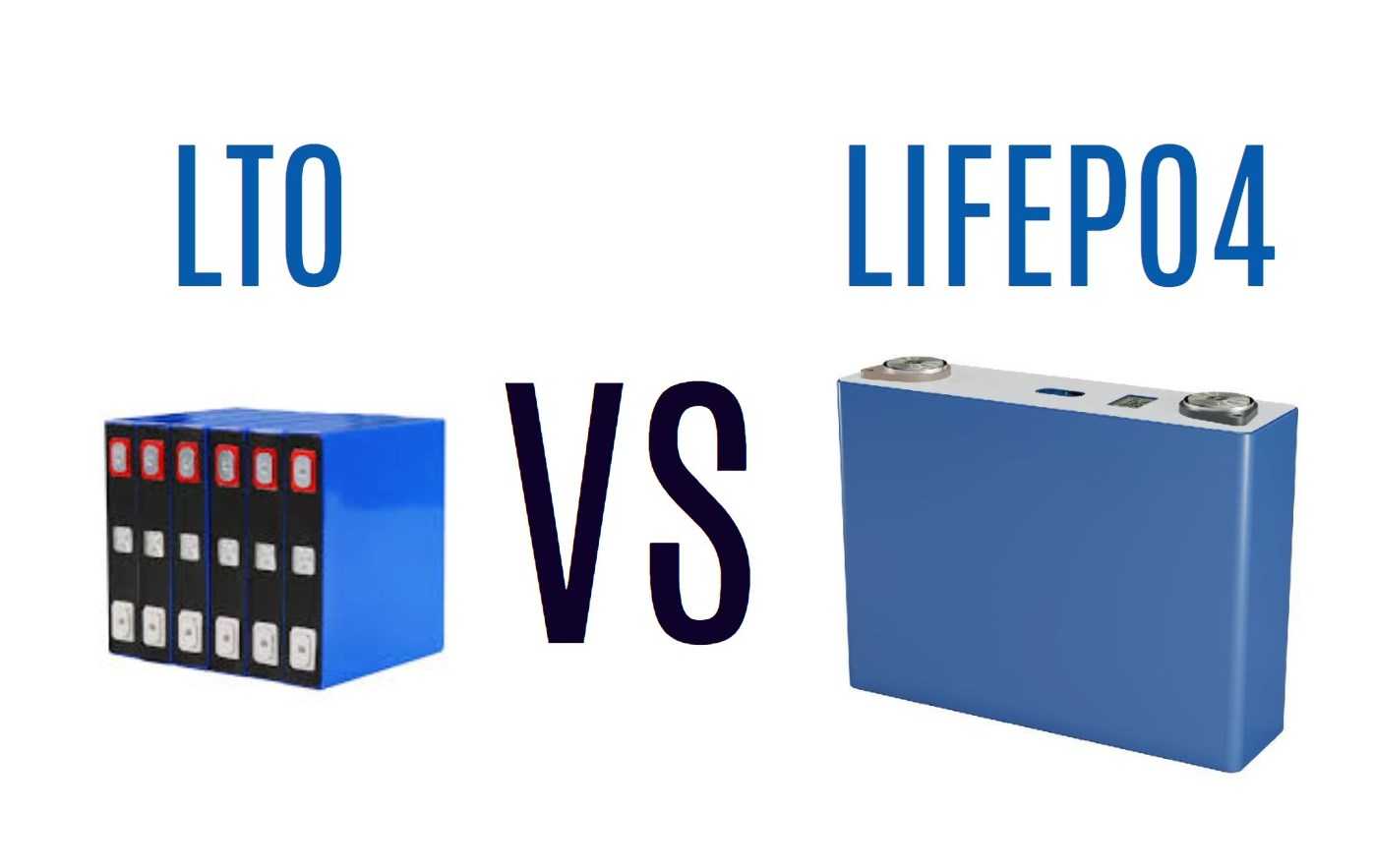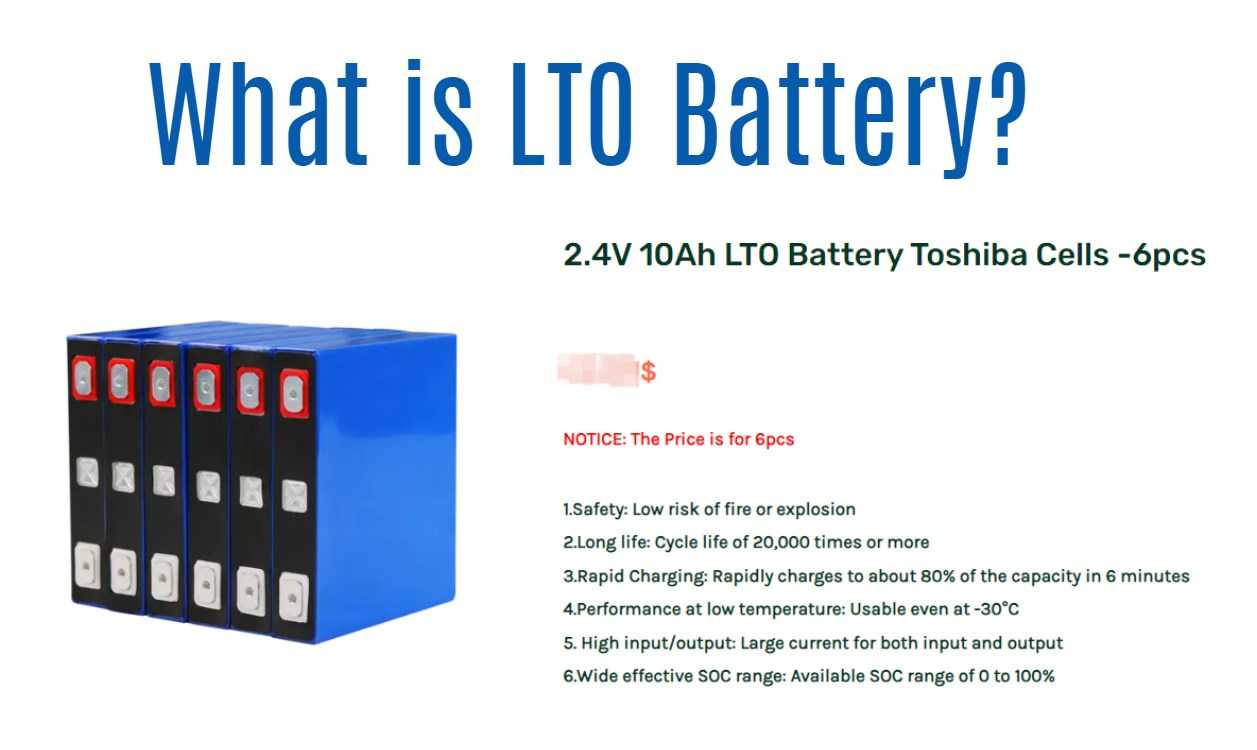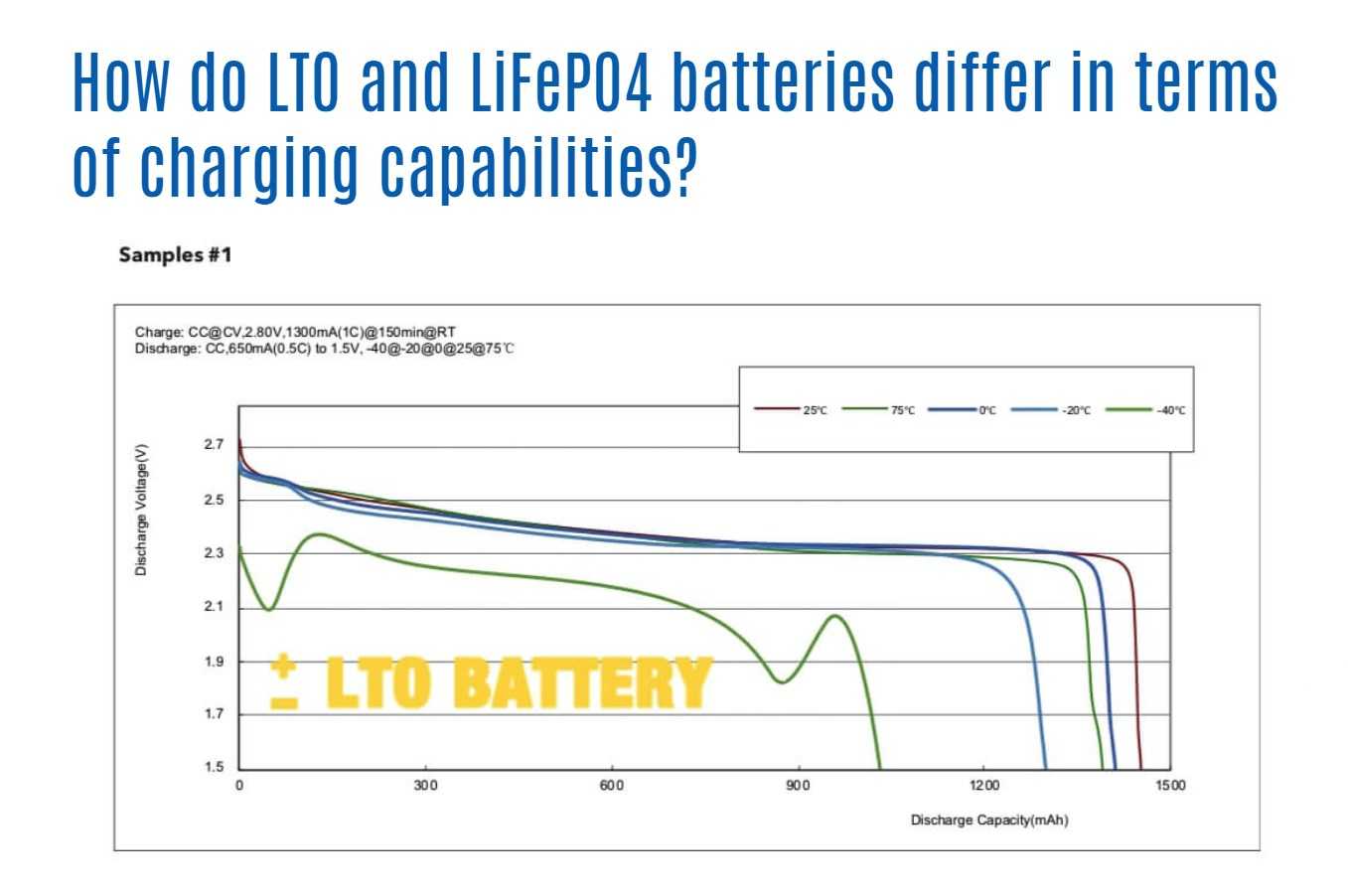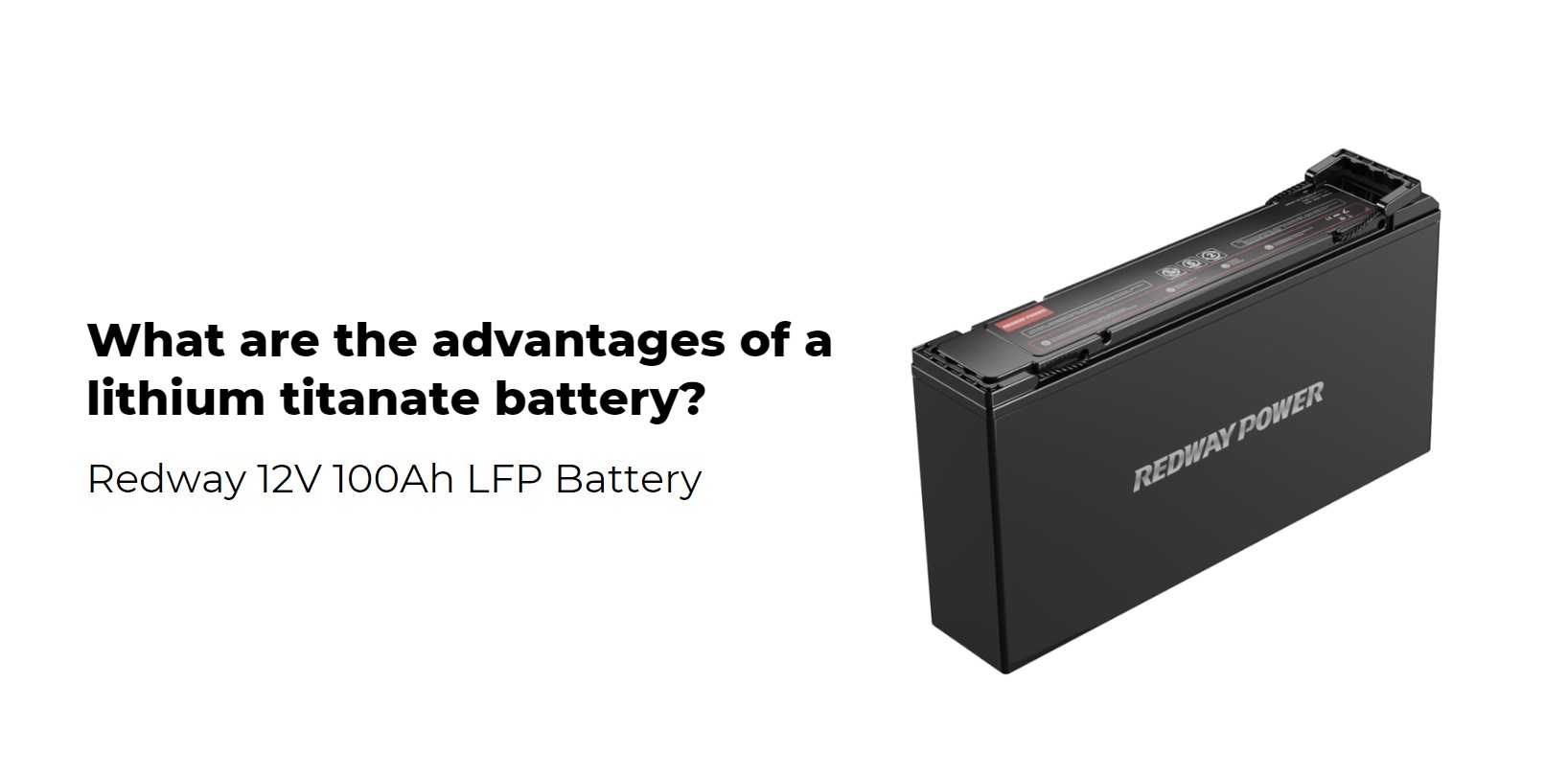Curious about the comparison between LTO and LiFePO4 batteries? LTO batteries have an impressive cycle life of up to 20,000 cycles, making them ideal for electric vehicles. LiFePO4 batteries offer good longevity with 2000-5000 cycles. LTO batteries allow rapid charging and discharging, while LiFePO4 batteries have a higher voltage. These characteristics make LTO batteries suitable for applications that prioritize durability and quick energy transfer, while LiFePO4 batteries are preferred for their longevity and higher voltage.
What is LiFePO4 Battery?
-
LiFePO4 Battery Composition: LiFePO4 batteries utilize lithium iron phosphate as the cathode material. This material provides stability and enhances the battery’s safety profile compared to other lithium-ion battery chemistries. The anode is typically made of carbon-based materials.
-
Safety and Long Lifespan: LiFePO4 batteries are recognized for their safety features. They are less prone to thermal runaway and have a lower risk of catching fire or exploding compared to other lithium-ion batteries. Additionally, LiFePO4 batteries have a longer lifespan, with the potential to endure thousands of charge-discharge cycles.
-
Environmental Friendliness: LiFePO4 batteries are considered environmentally conscious due to their composition. They are non-toxic, non-contaminating, and do not contain rare earth metals. This makes them a more sustainable choice compared to other battery technologies.
-
Applications and Benefits: LiFePO4 batteries find applications in various industries, including electric vehicles, renewable energy systems, marine and RV applications, and off-grid power solutions. Their stability, reliability, and high energy density make them suitable for demanding power requirements.
What is LTO Battery?
-
Fast Charging: One of the key advantages of LTO batteries is their ability to charge at a rapid rate. Compared to other lithium-ion batteries, LTO batteries have a shorter charging time, making them suitable for applications that require quick and efficient charging.
-
Lower Energy Density: While LTO batteries excel in fast charging, they have a lower energy density compared to other lithium-ion battery chemistries. This means that LTO batteries store less energy per unit volume or weight. As a result, they may not be the ideal choice for applications that prioritize high energy storage capacity.
-
Application Areas: LTO batteries find applications in various industries where fast charging is crucial. They are commonly used in electric vehicles, power tools, renewable energy systems, and grid energy storage. These batteries provide a reliable power source that can be quickly replenished, ensuring efficient operation in time-sensitive applications.
-
Considerations for Usage: When considering LTO batteries for a specific application, it is important to assess the trade-off between fast charging and energy density requirements. While LTO batteries offer quick charging, they may not provide the same energy storage capacity as other lithium-ion battery chemistries. Therefore, it is essential to evaluate the specific needs of the application and choose the battery technology accordingly.
LiFePO4 vs LTO Battery Comparison
-
Energy Density and Storage:
LiFePO4 batteries have a higher energy density, meaning they can store more energy in a smaller space. This makes them suitable for applications where maximizing energy storage capacity is crucial. On the other hand, LTO batteries have a lower energy density but excel in high power applications. They are ideal for applications that require fast charging and discharging. -
Power and Charging:
LTO batteries are known for their high power capabilities. They can deliver high currents, making them suitable for applications that require rapid power delivery. LTO batteries also have fast charging capabilities, allowing for quick replenishment. LiFePO4 batteries, although limited in their ability to provide high currents, offer good longevity and can withstand numerous charge-discharge cycles. -
Stability and Safety:
LTO batteries are more thermally and chemically stable compared to LiFePO4 batteries. This stability enhances their safety profile and reduces the risk of thermal runaway or other safety concerns. LiFePO4 batteries, while generally safe, may require additional safety measures in certain applications.
Pros and Cons
1. LiFePO4 Battery:
Pros: Lightweight, long cycle life, safe, quick charging, cost-effective.
Cons: Unstable in low-temperature conditions, security improvements needed.
Wholesale lithium golf cart batteries with 10-year life? Check here.
2. LTO Battery:
Pros: Fast charging, high safety, long cycle life, low self-discharge.
Cons: Low energy density, high cost, unstable at high temperatures, low working voltage.
Conclusion
In the comparison between LTO and LiFePO4 batteries, both have their advantages and disadvantages. LiFePO4 batteries are widely used due to their high energy density, long cycle life, and cost-effectiveness. However, LTO batteries excel in terms of fast charging, high safety, and low self-discharge. Ultimately, the choice depends on the specific requirements of the application.
Want OEM lithium forklift batteries at wholesale prices? Check here.
Note: The article provides a general overview, and readers are encouraged to conduct further research and consult experts before making a final decision.
FAQs
What is the difference between LTO and LiFePO4 batteries?
LTO batteries use lithium titanate as the anode material, while LiFePO4 batteries use lithium iron phosphate. LTO batteries offer rapid charging capabilities and have a longer lifespan, making them ideal for applications that require quick bursts of power. LiFePO4 batteries have a longer cycle life, superior safety features, and a wider temperature range, making them suitable for various applications including electric vehicles and renewable energy storage systems.
Which battery type is safer?
Both LTO and LiFePO4 batteries are considered safe options compared to other lithium-ion chemistries. However, LiFePO4 batteries have a reputation for superior safety due to their high resistance to thermal runaway and overheating. They are less prone to accidents or fires, providing peace of mind when using them.
Which battery type is more cost-effective?
The cost-effectiveness of LTO and LiFePO4 batteries depends on various factors such as lifespan and charging capabilities. While LTO batteries may be more expensive upfront, they often have longer lifespans, making them more cost-effective in the long run. LiFePO4 batteries may have a lower upfront cost but offer a balance between power density and energy density.
Can LTO or LiFePO4 batteries be used in electric vehicles?
Both LTO and LiFePO4 batteries are suitable for use in electric vehicles. LTO batteries excel in applications that require rapid charging and discharging, making them ideal for electric vehicles that need quick bursts of power. LiFePO4 batteries offer a longer cycle life and superior safety features, making them a reliable choice for electric vehicle power systems.
How do LTO and LiFePO4 batteries differ in terms of charging capabilities?
LiFePO4 batteries typically have faster charge times and higher energy conversion rates compared to LTO batteries. This means that LiFePO4 batteries can be charged more quickly and efficiently, providing a shorter charging time and maximizing energy usage. LTO batteries, while not as fast in charging, have the advantage of a longer overall lifespan and the ability to handle rapid charging without compromising battery life.
What are the disadvantages of a lithium iron phosphate battery?
-
Lower Energy Density:
One of the primary disadvantages of LiFePO4 batteries is their lower energy density compared to other lithium-ion battery chemistries. This means that LiFePO4 batteries store less energy per unit volume or weight. As a result, they may not be the ideal choice for applications that require high energy storage capacity. -
Performance at Low Temperatures:
LiFePO4 batteries don’t perform well at low temperatures. Their ability to deliver power and capacity may be significantly reduced in cold environments. To mitigate this, additional protection and care, such as insulation or heating systems, may be required in applications where LiFePO4 batteries are exposed to low temperatures. -
Transportation and Aging Effects:
Transportation and aging can impact the performance and lifespan of LiFePO4 batteries. During transportation, proper handling and packaging are crucial to prevent damage or degradation. Additionally, over time, LiFePO4 batteries may experience aging effects, such as capacity loss or reduced performance. Regular maintenance and monitoring can help identify and address these issues.
What are the advantages of a lithium iron phosphate battery?
-
Longer Lifespan:
One of the key advantages of LiFePO4 batteries is their longer lifespan compared to other battery chemistries. LiFePO4 batteries can endure a higher number of charge-discharge cycles, making them suitable for applications that require longevity and durability. -
Improved Safety:
LiFePO4 batteries are known for their improved safety compared to other lithium-ion batteries. They have a higher ignition point, reducing the risk of fire or explosion. This makes them a reliable choice in applications where safety is a critical concern. -
Fast Charging:
LiFePO4 batteries have the ability to charge at a faster rate compared to other battery chemistries. This allows for quicker replenishment of power, making them suitable for applications that require rapid charging and efficient energy management. -
Wider Operating Temperature Range:
LiFePO4 batteries can operate effectively in a wide temperature range, from extremely cold to hot environments. This versatility makes them suitable for applications in various climates and environments. -
High Energy Efficiency:
LiFePO4 batteries exhibit high energy efficiency, meaning they can deliver a significant amount of stored energy without significant losses. This makes them an efficient choice for applications that require optimal energy utilization. -
Compact Size with High Power Density:
LiFePO4 batteries have a compact size and high power density, allowing for efficient use of space and higher power output. This makes them suitable for applications where size and weight are critical factors, such as portable electronics and electric vehicles.
What are the characteristics of a lithium iron phosphate battery?
-
Good Thermal Stability:
LiFePO4 batteries exhibit good thermal stability, meaning they can withstand high temperatures without decomposition. This characteristic enhances their safety and reduces the risk of thermal runaway, making them a reliable choice in demanding environments. -
Low Risk of Thermal Runaway:
Compared to other lithium-ion battery chemistries, LiFePO4 batteries have a lower risk of thermal runaway. Thermal runaway refers to a condition where the battery temperature rapidly increases, leading to a chain reaction of heat generation and potential safety hazards. The low risk of thermal runaway in LiFePO4 batteries enhances their safety profile. -
Long Cycle Life:
LiFePO4 batteries have a long cycle life, meaning they can endure a higher number of charge-discharge cycles without significant capacity degradation. This characteristic makes them suitable for applications that require longevity and durability, such as renewable energy systems and electric vehicles. -
High Discharge Current Capability:
LiFePO4 batteries have the ability to deliver high discharge currents, making them suitable for applications that require rapid power delivery. This characteristic enables LiFePO4 batteries to meet the power demands of various devices and systems effectively. -
Nominal Voltage:
The nominal voltage of a single LiFePO4 battery is typically 3.2V. This voltage level is well-suited for many applications and allows for easy integration into existing systems or devices.
What is a lithium iron phosphate battery?
-
Composition:
LiFePO4 batteries consist of a cathode, anode, and electrolyte. The cathode is made of lithium iron phosphate (LiFePO4), which provides the battery with its unique properties. The anode is typically composed of a graphitic carbon electrode with a metallic backing. The electrolyte facilitates the movement of lithium ions between the cathode and the anode during charge and discharge cycles. -
Characteristics:
LiFePO4 batteries possess several key characteristics that set them apart. Firstly, they exhibit excellent thermal stability, meaning they can withstand high temperatures without decomposition or safety risks. This characteristic enhances their reliability and safety in demanding environments. Secondly, LiFePO4 batteries have a long cycle life, allowing them to endure a higher number of charge-discharge cycles without significant capacity degradation. This longevity makes them suitable for applications that require durability and longevity. Additionally, LiFePO4 batteries have a high discharge current capability, enabling them to deliver power efficiently and effectively. -
Practical Applications:
LiFePO4 batteries find applications in various industries and sectors. They are commonly used in renewable energy systems, such as solar power storage, due to their long cycle life and high energy efficiency. Electric vehicles also benefit from LiFePO4 batteries, as they offer improved safety, high power output, and long lifespan. Furthermore, LiFePO4 batteries are utilized in portable electronics, such as smartphones and laptops, where compact size, high energy density, and reliability are crucial.
What are the disadvantages of a lithium titanate battery?
-
Low Energy Density:
One of the main disadvantages of lithium titanate batteries is their low energy density. Energy density refers to the amount of energy that can be stored in a battery per unit of volume or weight. Due to their specific composition, lithium titanate batteries have a lower energy density compared to other battery chemistries. This means they can store less energy, resulting in shorter runtimes for devices or systems powered by lithium titanate batteries. -
Higher Price:
Lithium titanate batteries tend to be more expensive compared to other battery types. The higher cost is primarily attributed to the production process and the materials used. This higher price can impact their affordability and hinder their widespread adoption, especially in cost-sensitive applications. -
Limitations in Cycle Life:
Lithium titanate batteries have limitations in their cycle life, which refers to the number of charge-discharge cycles a battery can endure before experiencing a significant capacity loss. While lithium titanate batteries are known for their extended lifespan compared to other battery chemistries, they may not be able to withstand as many cycles. This can be a consideration in applications that require frequent charging and discharging.
What are the advantages of a lithium titanate battery?
-
Long Lifetime:
One of the key advantages of lithium titanate batteries is their long lifetime. These batteries can endure a higher number of charge-discharge cycles without significant capacity degradation. This extended lifespan makes them suitable for applications that require durability and reliability, such as electric vehicles and renewable energy systems. -
Enhanced Safety:
Lithium titanate batteries have enhanced safety features compared to other battery chemistries. They are less prone to thermal runaway, a condition where the battery temperature rapidly increases, leading to safety hazards. This improved safety profile makes lithium titanate batteries a preferred choice in applications where safety is a top priority. -
Fast Charging Performance:
Lithium titanate batteries exhibit excellent fast charging performance. They can accept high charge currents, allowing for rapid charging times. This characteristic is particularly advantageous in applications that require quick charging, such as electric vehicles, where minimizing charging time is crucial for user convenience and efficiency. -
Resistance to Wide Temperature Ranges:
Lithium titanate batteries have good resistance to wide temperature ranges. They can operate effectively in both high and low temperature environments, making them suitable for applications that experience extreme temperature conditions. This versatility allows lithium titanate batteries to perform reliably in various climates and environments.
What is the performance of a lithium titanate battery?
-
High Charge-Discharge Rates:
Lithium titanate batteries excel in high charge-discharge rates. This means they can be charged and discharged rapidly, allowing for quick energy transfer and efficient power delivery. This characteristic is particularly beneficial in applications that require fast charging or high power output, such as electric vehicles and energy storage systems. -
Stable Operation at High Temperatures:
Lithium titanate batteries demonstrate stable operation even in high-temperature environments. They possess good thermal stability, enabling them to withstand elevated temperatures without significant performance degradation or safety risks. This feature makes lithium titanate batteries suitable for applications that experience high heat, such as renewable energy systems in sunny regions. -
Excellent Recharge Efficiency:
Lithium titanate batteries exhibit high recharge efficiency, ensuring minimal energy loss during the charging process. They efficiently convert electrical energy back into stored energy, maximizing the overall energy utilization of the battery. This high recharge efficiency contributes to the overall efficiency and effectiveness of lithium titanate batteries in various applications. -
Wide Operating Temperature Range:
Lithium titanate batteries have a wide operating temperature range, allowing them to function effectively in both high and low temperature environments. They can perform reliably across a range of climate conditions, making them suitable for applications that experience extreme temperature variations. This versatility ensures the consistent performance of lithium titanate batteries in diverse settings.
What is a lithium titanate battery?
-
Faster Charging:
A notable advantage of lithium titanate batteries is their ability to charge at a faster rate compared to other lithium-ion batteries. This means that devices or systems powered by lithium titanate batteries can be charged more quickly, reducing waiting times and increasing overall efficiency. The fast charging capability of lithium titanate batteries is particularly beneficial in applications where time is a critical factor, such as electric vehicles and portable electronics. -
Lower Energy Density:
However, it’s important to note that lithium titanate batteries have a lower energy density compared to other battery chemistries. Energy density refers to the amount of energy that can be stored in a battery per unit of volume or weight. Due to their specific composition, lithium titanate batteries may store less energy, resulting in a shorter runtime for devices or systems powered by these batteries. This consideration should be taken into account when evaluating the suitability of lithium titanate batteries for specific applications. -
High Safety and Stability:
Lithium titanate batteries are known for their high safety and stability. They have a reduced risk of thermal runaway, which is a condition where the battery temperature rapidly increases, potentially leading to safety hazards. This enhanced safety profile makes lithium titanate batteries a preferred choice in applications that prioritize safety, such as medical devices and aerospace applications. -
Wide Temperature Resistance:
Another advantage of lithium titanate batteries is their ability to operate effectively in a wide range of temperature conditions. They exhibit good resistance to both high and low temperatures, making them suitable for applications that experience extreme temperature variations. This versatility allows lithium titanate batteries to perform reliably in diverse environments, including automotive, renewable energy, and industrial applications.










